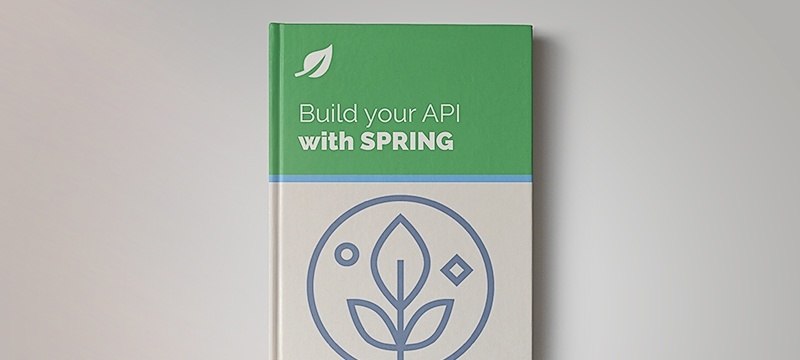Partner – Microsoft – NPI EA (cat= Spring Boot)
Azure Spring Apps is a fully managed service from Microsoft
(built in collaboration with VMware), focused on building and
deploying Spring Boot applications on Azure Cloud without
worrying about Kubernetes.
The Enterprise plan comes with some interesting features, such
as commercial Spring runtime support, a 99.95% SLA and some deep
discounts (up to 47%) when you are ready for production.
>> Learn more and deploy your first Spring Boot app to
Azure.
And, you can participate in a very quick (1 minute) paid user
research from the Java on Azure product team.
Partner – Aegik AB – NPI EA (cat=JPA)
Slow MySQL query performance is all too common. Of course
it is. A good way to go is, naturally, a dedicated profiler that
actually understands the ins and outs of MySQL.
The Jet Profiler was built for MySQL only, so it can do
things like real-time query performance, focus on most used tables
or most frequent queries, quickly identify performance issues and
basically help you optimize your queries.
Critically, it has very minimal impact on your server's
performance, with most of the profiling work done separately - so
it needs no server changes, agents or separate services.
Basically, you install the desktop application, connect to your MySQL
server, hit the record button, and you'll have results
within minutes:
>> Try
out the Profiler
Partner – Payara – NPI EA (cat=JAVA EE)
Accelerate Your Jakarta EE Development with Payara Server!
With best-in-class guides and documentation, Payara
essentially simplifies deployment to diverse
infrastructures.
Beyond that, it provides intelligent insights and actions to
optimize Jakarta EE applications.
The goal is to apply an opinionated approach to get to
what's essential for mission-critical applications - really solid
scalability, availability, security, and long-term support:
>> Download
and Explore the Guide (to learn more)
eBook – Guide Junit – NPI EA (cat=Java) eBook – Persistence – NPI EA (cat=Persistence) eBook – Jackson – NPI EA (cat=Jackson) eBook – HTTP Client – NPI EA (cat=Http Client-Side) eBook – Maven – NPI EA (cat = Maven) Course – RwS – NPI EA (cat=REST) Course – LS – NPI EA (cat=Spring)
Get started with Spring and Spring Boot, through the reference
Learn Spring course:
>> LEARN
SPRING
eBook – RwS – NPI EA (cat=Spring MVC) Partner – Machinet – NPI EA (cat = Testing)
The AI Assistant to boost Boost your productivity writing unit
tests - Machinet AI.
AI is all the rage these days, but for very good reason. The
highly practical coding companion, you'll get the power of
AI-assisted coding and automated unit test generation.
Machinet's Unit Test AI Agent utilizes your own project
context to create meaningful unit tests that intelligently aligns
with the behavior of the code.
And, the AI Chat crafts code and fixes errors with ease,
like a helpful sidekick.
Simplify Your Coding Journey with Machinet AI:
>> Install Machinet
AI in your IntelliJ
Partner – Codium – NPI EA (cat = Testing)
Get non-trivial analysis (and trivial, too!) suggested right
inside your IDE or Git platform so you can code smart, create
more value, and stay confident when you push.
Get CodiumAI for free and become part of a community of
over 280,000 developers who are already experiencing improved and
quicker coding.
Write code that works the way you meant it to:
>>
CodiumAI. Meaningful Code Tests for Busy Devs
Partner – Bellsoft – NPI EA (cat = Spring)
Looking for the ideal Linux distro for running modern Spring
apps in the cloud?
Meet Alpaquita Linux: lightweight, secure, and powerful
enough to handle heavy workloads.
This distro is specifically designed for running Java
apps. It builds upon Alpine and features significant
enhancements to excel in high-density container environments while
meeting enterprise-grade security standards.
Specifically, the container image size is ~30% smaller than
standard options, and it consumes up to 30% less RAM:
>> Try
Alpaquita Containers now.
Course – LSS – NPI EA (cat=Spring Security)
Yes, Spring Security can be complex, from the more advanced
functionality within the Core to the deep OAuth support in the
framework.
I built the security material as two full courses - Core and
OAuth, to get practical with these more complex scenarios. We
explore when and how to use each feature and code through it on
the backing project.
You can explore the course here:
>> Learn Spring
Security
Partner – DBSchema – NPI EA (tag = SQL)
DbSchema is a super-flexible database designer, which can
take you from designing the DB with your team all the way to
safely deploying the schema.
The way it does all of that is by using a design model, a
database-independent image of the schema, which can be shared in a
team using GIT and compared or deployed on to any database.
And, of course, it can be heavily visual, allowing you to
interact with the database using diagrams, visually compose
queries, explore the data, generate random data, import data or
build HTML5 database reports.
>>
Take a look at DBSchema
Partner – Aegik AB – NPI EA (tag = SQL)
Slow MySQL query performance is all too common. Of course
it is. A good way to go is, naturally, a dedicated profiler that
actually understands the ins and outs of MySQL.
The Jet Profiler was built for MySQL only, so it can do
things like real-time query performance, focus on most used tables
or most frequent queries, quickly identify performance issues and
basically help you optimize your queries.
Critically, it has very minimal impact on your server's
performance, with most of the profiling work done separately - so
it needs no server changes, agents or separate services.
Basically, you install the desktop application, connect to your MySQL
server, hit the record button, and you'll have results
within minutes:
>> Try
out the Profiler
Course – LSD – NPI EA (tag=Spring Data JPA)
Spring Data JPA is a great way to handle the complexity of
JPA with the powerful simplicity of Spring Boot.
Get started with Spring Data JPA through the guided reference
course:
>> CHECK OUT THE
COURSE
Partner – MongoDB – NPI EA (tag=MongoDB)
Just published a deep dive into building a relevance-focused
search with MongoDB. More or less out of the box:
>> MongoDB Atlas Search
Partner – Expected Behavior – NPI EA (tag=PDF)
Creating PDFs is actually surprisingly hard. When we
first tried, none of the existing PDF libraries met our needs. So
we made DocRaptor for ourselves and later launched it as one
of the first HTML-to-PDF APIs.
We think DocRaptor is the fastest and most scalable way to
make PDFs, especially high-quality or complex PDFs. And as
developers ourselves, we love good documentation, no-account trial
keys, and an easy setup process.
>> Try DocRaptor's
HTML-to-PDF Java Client (No Signup Required)
Lots of interesting writeups on Java 9 this week.
Here we go…
1. Spring and Java
Java 9 will be out in a week – this is the right time to get to know the JPMS better.
There multiple ways of configuring a Spring context – some can (maybe even should) involve Groovy and Kotlin.
JUnit 5 has just been released – time to start putting it to work.
A very interesting write-up about simulating scheduleAtFixedRate and scheduleWithFixedDelay with RxJava.
Using an if statement can be both good practice – as well as a code smell – it’s important to know when to use it.
Lombok is a great tool that can bring some fresh breath to Java and make some boilerplate go away.
It’s important to know the semantics of tools we’re using – otherwise, for example, we might end up with unintentional sequential processing where parallel was expected.
Also worth reading:
Webinars and presentations:
Time to upgrade:
2. Technical
A comprehensive guide to NoSQL from the non-technical viewpoint 🙂
A cool proxy solution I didn’t know about until this writeup.
Also worth reading:
3. Musings
Microservices are not silver bullets – they should be used when you need them and not because you want them.
Also worth reading:
4. Comics
And some cool Dilberts of the week:
5. Pick of the Week






